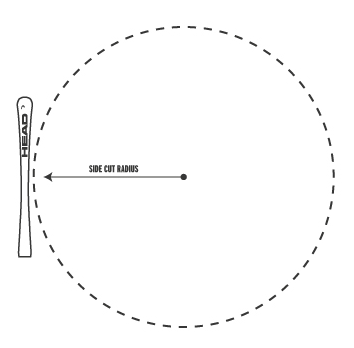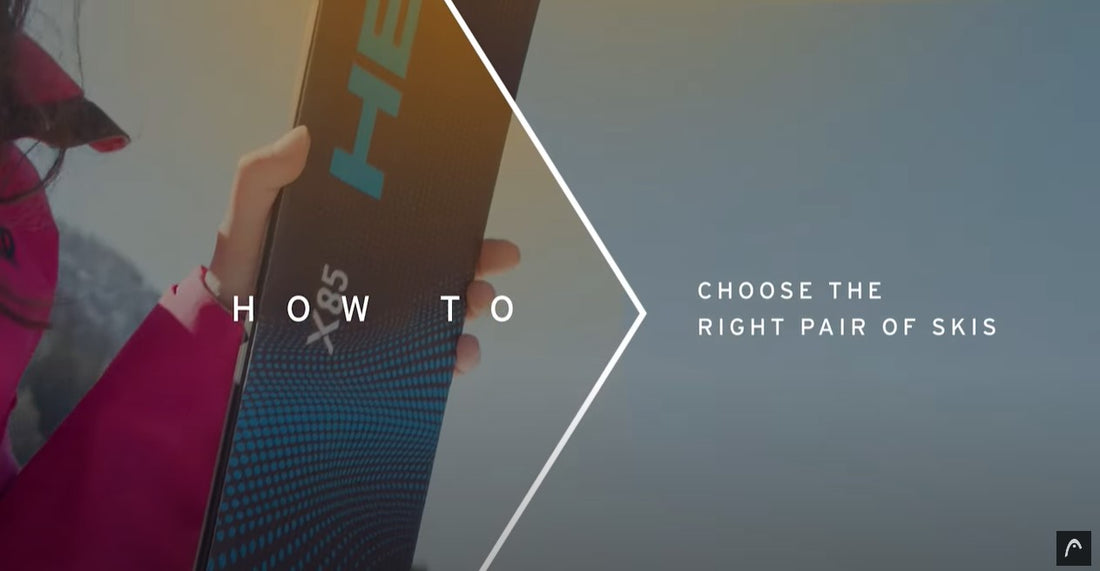When choosing a set of skis, it’s time to start thinking about what style of skiing you will be doing and what terrain you’ll be riding.
At HEAD we distinguish our skis between different segments of skiing as each has its own characteristic and style, and we want to ensure we deliver the best possible solution for each segment of skiing.
WHAT TYPE OF SKIER AM I?
Speed is in your blood – nothing gets your adrenaline pumping than tearing down a race course, feeling the slap of race gates as you fly past them, the edges of your skis carving an accurate racing line from top to bottom. You are a potential Worldcup Rebel looking for performance and speed.
As a racer, a ski with a narrow footprint for accurate turns and fantastic acceleration will be perfect for you. But be aware, these skis will be harder work and less forgiving for just cruising around the mountain.
Consider the type of ski racing you are going to be doing, as this will also affect what ski you should choose, as the length and sidecut will vary from discipline to discipline.
As a performance skier, you may be a former racer or at least a great, confident skier. You still enjoy that feeling of speed and the wind clutching at your ski jacket, but you have stepped away from the gates and can now be found charging runs with wider, arcing turns.
A performance ski provides a similar construction to a race ski with the same technology, just toned down to make it more accessible to the everyday skier, making it less exhausting to ski without taking away that exhilarating, fun aspect of quick skiing.
An all mountain skier is exactly what you would expect – someone who is at home flying down pistes as well as some off-piste adventures. Someone who wants a bit everything without getting tied into a specific discipline.
An all mountain ski is perfect for 95% of recreational skiers, and even professionals such as instructors and ski patrol. They are easy to ski, reactive to your movements and will give you the confidence to charge down the hill in any snow conditions.
Some women are perfectly happy on using any type of ski, and don’t rely on finding a female-specific ski. However, some do prefer a ski that is built to match the female anatomy and biomechanics, as it will make it easier for them to focus on their skiing techniques, and the ski will compliment their progression.
The HEAD Women skis are the only unique women’s skis on the market. It’s a totally different style and characteristic of ski, providing balance and control with a lightweight build, providing a 20% weight reduction and a unique weight balance profile.
They provide pure joy for beginners and even more joy for powerful female ski racers.
Freeride skiers are the collective of individuals not held back by piste markers, who want to push the boundaries of where they can go and what terrain they can explore. When the snow is fresh they will be the first ones lining up for the chairlift, itching to put a wide turn through waist-deep powder.
Freeride skis are lighter and have a much wider footprint as well as tip and tail rocker for great flotation and manoeuvrability in fresh or deep snow. They will help you sit on the surface of the snow rather than sinking into it, saving you from too much leg burn and allowing you to ski fresh snow for longer.

Freeride skis will be a little less fun on icy, hard-packed snow but will excel outside the boundary lines.
Can you see yourself spending your time in the snow park, greasing rails and popping off kickers? Then a freestyle ski is going to be the one for you. Non-directional twin-tip skis allow for easy switch skiing and plenty of pop to carry you to the sweet spot of the landings of jumps. Their radius won’t be as forgiving as a typical directional ski for general carving around, but they’re perfectly suited to the park.
It’s important to consider how stiff you would like your Freestyle Ski. A softer ski will give you the ability to press and lock into rails better, whilst a stiffer ski will provide stability and control on the run-in to kickers and enable you to hold an edge better through the transition of a halfpipe.
Young skiers deserve the best they can get to help them progress their skiing.
HEAD Junior skis have a junior rocker profile to provide easy and quick learning skills that will be a lot more forgiving for youngsters.

BEGINNER & INTERMEDIATE
If you are new to skiing, then a shorter, softer ski with a smaller sidecut will be your best friend as you improve your techniques. They will allow you to manoeuvre them around the mountain easily and still be forgiving for when mistakes inevitably happen.
As you become more comfortable and confident with your skiing, you may look to opting for a slightly longer and stiffer ski, but still with a forgiving sidecut and perhaps wider underfoot. This will allow you to maintain more speed as you take those skills to the steeper slopes without making it too hard on yourself.
DOES THIS MEAN I NEED 2 PAIRS OF SKIS?
Not necessarily – it all depends on where you want to take your skiing and how frequently you’re going to be using them. If you are reading the segments above and can see yourself wanting to focus on several of them, then having a few different options in your ski bag will help. It’s not uncommon for skiers to own one set of performance skis for carving on piste, and a wider pair for when the snow gets deep.
For example, if you really get into ski racing, you will find skiers with numerous pairs of the same ski for one discipline – and with four disciplines, the number of skis you own (and the weight of your ski bag) can quickly escalate!
However, if you think you might just dip a ski pole into different disciplines rather than them becoming your all-consuming focus, an All Mountain ski can act as a “one ski quiver” for the vast majority of skiers.
WHAT'S THE RIGHT LENGTH FOR MY SKIS?
The right length of your ski is not primarily depending on your personal height but more so from your abilities, technique and also requests.
Long skis provide more stability at high speed, you can go faster but you also need more power to steer the skis.
Shorter skis are more agile, engage quicker but are less stable at long turns and high speed.
WHAT RADIUS AND SIDECUT SHOULD I BE LOOKING FOR?
The radius of a ski is effectively the turning ability of a ski, whilst the sidecut is the shape of the ski that creates this radius. The more sidecut a ski has the better its ability to make sharper turns on a smaller radius, because the edge captures much more control through the snow.


A shorter radius will turn faster than a ski with a longer radius. Slalom skiers, who must perform tight technical turns will use a ski with a short radius, but these skis will be much less forgiving when you are just cruising down the mountain and you will be more prone to edge catches.
All Mountain and Freeride skis will have a wider radius allowing for much wider carving turns down the mountain, but it will be a lot harder to execute tight, snappy turns.
WHAT BINDINGS DO I NEED?
Ski bindings are undoubtably one of the most important pieces of ski equipment, as they allow your boots to release safely when you fall as well as preventing unwanted pre-releases.
The waist width of your ski will determine what size brakes you need, as if the brake size is narrower than the waist width of your ski, the brake on the binding will not deploy correctly when it comes off. It’s also important to consider the DIN level of the binding as well, as this will affect whether the ski comes off at the right time or not.
At head you’ll find it easy to choose a binding that is compatible with your new ski.
WILL I NOTICE THE DIFFERENCE IN SKI CONSTRUCTION?
If you’re new to skiing, then it is unlikely that you will be able to tell the specific differences between different ski constructions straight away, but you may notice how a ski with a stiffer construction is harder to ski than one that is more flexible. As you use different skis you will start to feel how different materials used in the construction process will affect a skis performance on the slopes.

